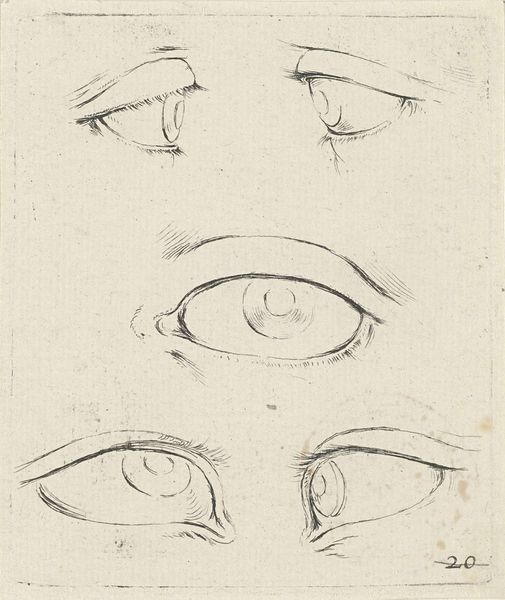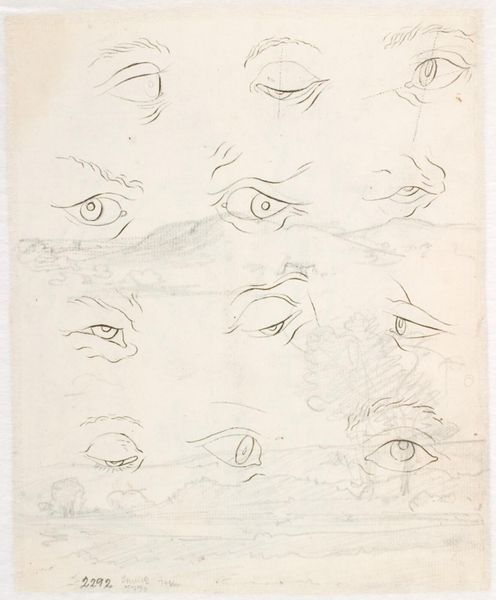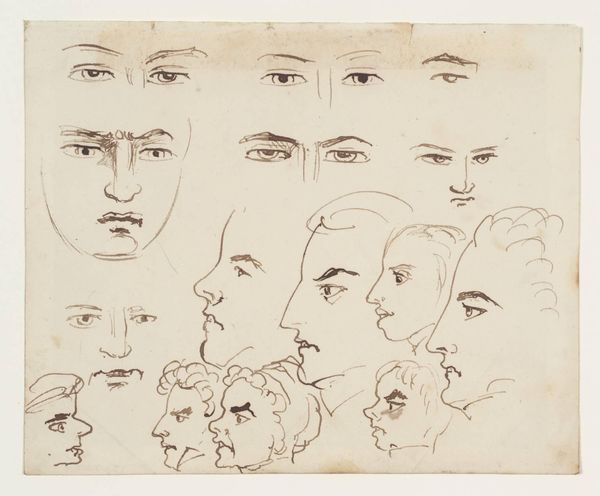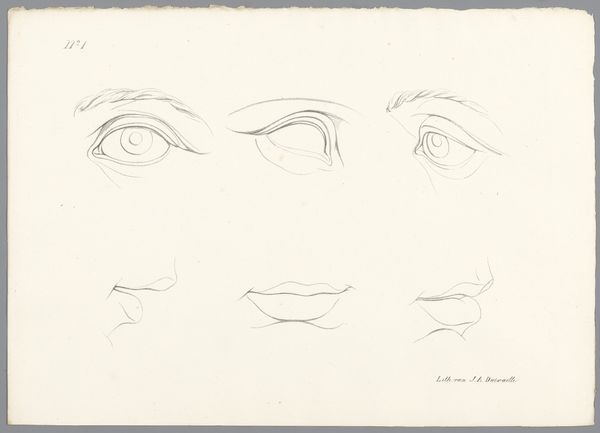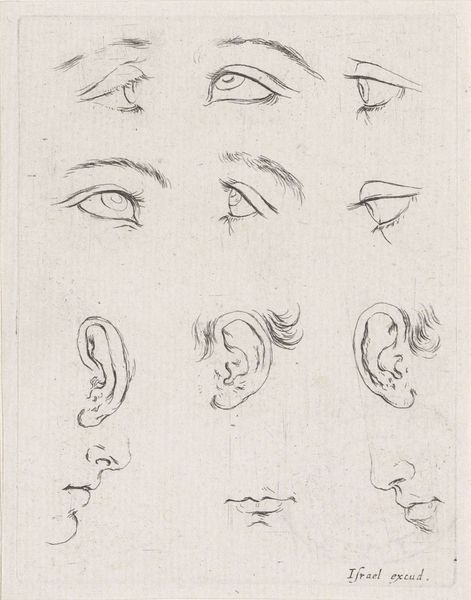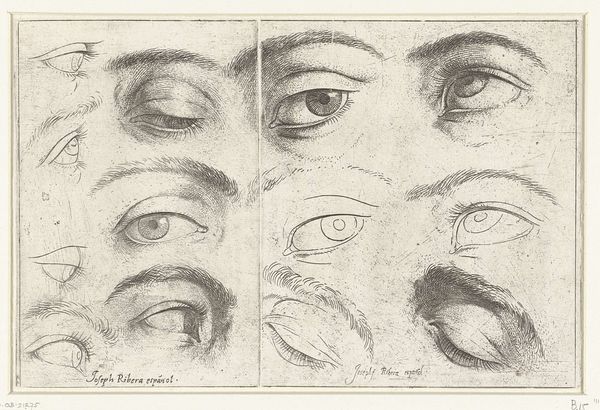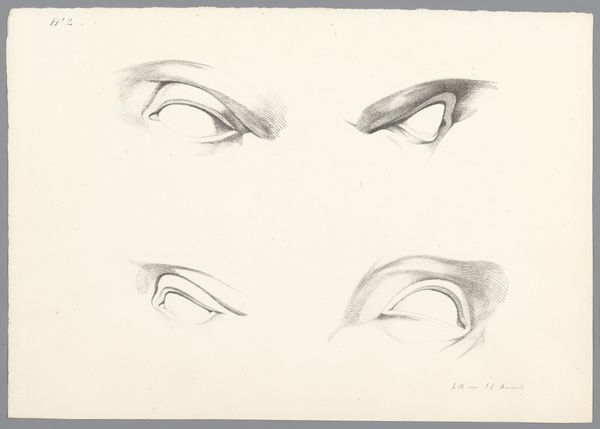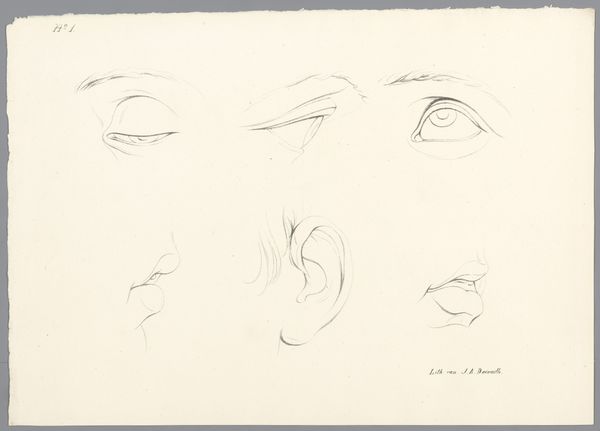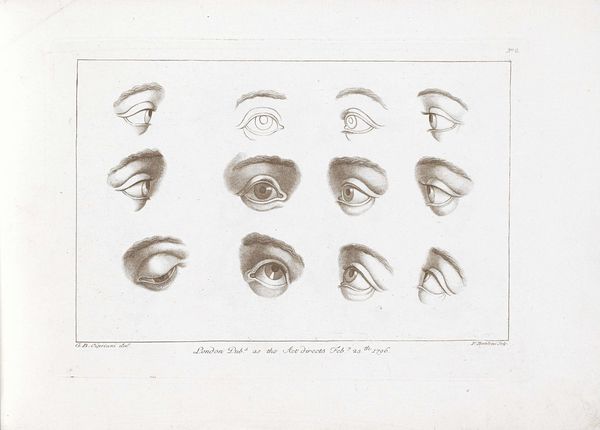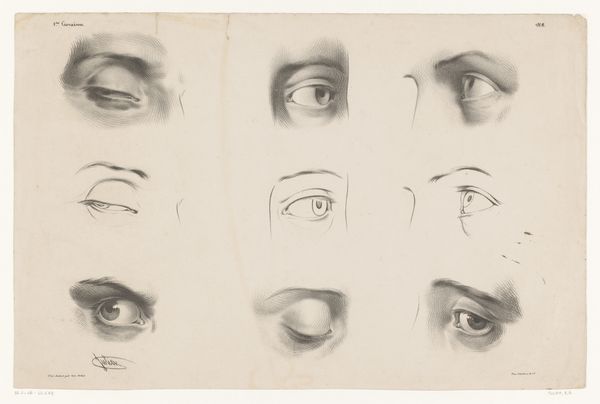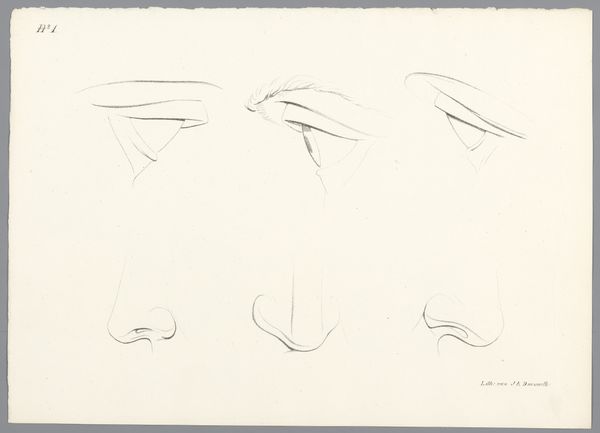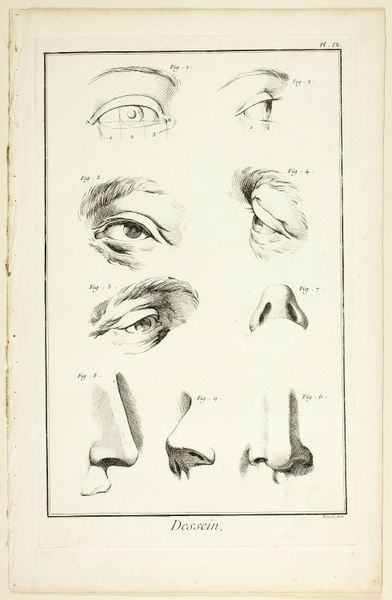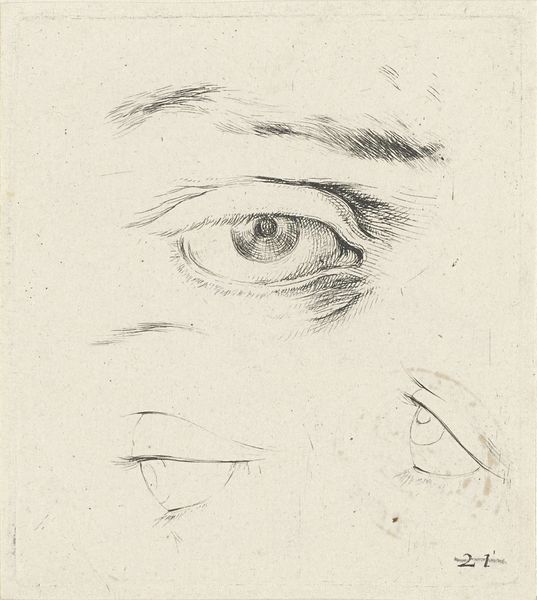
drawing, paper, ink
#
portrait
#
pencil drawn
#
drawing
#
pencil sketch
#
mannerism
#
paper
#
11_renaissance
#
ink
#
pencil drawing
#
portrait drawing
#
academic-art
Dimensions: height 126 mm, width 155 mm
Copyright: Rijks Museum: Open Domain
Editor: So this intriguing piece, "Zeven ogen, twee monden en een neus," by Stefano della Bella, made sometime between 1620 and 1664, is an ink and pencil drawing on paper. It's basically a collection of eyes, a nose, and some mouths... a study, I guess? What I find striking is how each eye seems to have its own distinct expression, almost like a catalog of emotions. What do you see in this work? Curator: It's a fascinating exercise in capturing the human gaze. Consider how, across cultures and centuries, the eyes have been considered windows to the soul, mirroring our inner states. The seven eyes presented here are not merely anatomical studies, but each conveys a micro-narrative. Each placement on the paper plane speaks differently of character. Are they conveying distinct humors, perhaps? Editor: Humors? You mean, like, mood? Curator: Precisely. The Renaissance and Baroque periods, from which this work springs, were deeply influenced by the ancient Greek theory of humors – the idea that our physical and emotional states are governed by the balance of bodily fluids. Could Della Bella be subtly portraying the sanguine, melancholic, choleric, and phlegmatic temperaments through the slant of an eyebrow, the droop of an eyelid? Editor: Wow, I never thought of it that way. So, like, that one eye that's gazing upwards could represent hope, while the downward-looking one is sadness? Curator: Potentially. Furthermore, observe the artistic convention: The strategic placement of the eyes invites us, as viewers, to engage in a continuous act of interpretation. In Mannerism, the style in which this artist was trained, there’s a tradition of deliberately imbuing art with ambiguity. Editor: It's like a Rorschach test but with eyes! That's really clever. Thanks, I’ll remember this the next time I visit the Rijksmuseum. Curator: Yes, indeed. Remember that the artist gives us the parts but not the whole; the viewer creates a totality of their own!
Comments
No comments
Be the first to comment and join the conversation on the ultimate creative platform.
